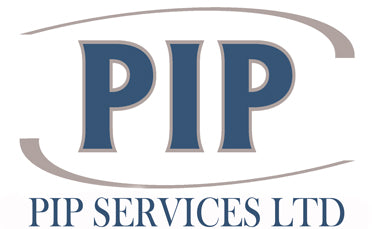Workplace health and safety isn’t just about compliance; t’s about protecting people. Every year, thousands of injuries occur in the workplace, many of them preventable. Whether you're managing a busy construction site, a bustling office, or a warehouse full of equipment, understanding the most common hazards, and how to control them, is key to creating a safe, productive environment.
Here are 10 of the most common workplace hazards and effective strategies to eliminate or reduce them.
1. Slips, Trips and Falls
The Hazard
One of the leading causes of workplace injuries, slips, trips and falls can happen due to wet floors, uneven surfaces, loose cables, or poor housekeeping.
How to Eliminate It
- Keep floors clean, dry, and free of obstacles.
- Use non-slip mats and flooring in high-risk areas.
- Mark changes in floor level clearly.
- Ensure adequate lighting throughout the premises.
- Secure trailing cables or use cable covers.
2. Manual Handling and Lifting Injuries
The Hazard
Incorrect lifting techniques and repetitive manual handling can cause musculoskeletal disorders and back injuries.
How to Eliminate It
- Provide manual handling training for all staff.
- Use mechanical aids (trolleys, lifts) where possible.
- Encourage team lifting for heavy or awkward loads.
- Redesign tasks to minimize unnecessary handling.
3. Working at Height
The Hazard
Falls from height remain a top cause of serious injuries and fatalities, especially in construction and maintenance work.
How to Eliminate It
- Avoid working at height wherever possible.
- Use proper fall protection (e.g. harnesses, guardrails).
- Ensure ladders are stable, inspected, and used correctly.
- Provide training on safe working practices.
4. Hazardous Substances (COSHH)
The Hazard
Exposure to chemicals, dust, fumes, and other hazardous substances can lead to respiratory issues, skin conditions, or worse.
How to Eliminate It
- Conduct a COSHH assessment for all hazardous substances.
- Substitute with safer alternatives where possible.
- Provide correct PPE and ensure proper usage.
- Store substances securely and label containers clearly.
5. Fire and Explosion Risk
The Hazard
Poor fire safety can result in catastrophic damage, injury, or death. Risks may stem from flammable materials, faulty electrics, or lack of procedures.
How to Eliminate It
- Carry out a fire risk assessment.
- Ensure accessible and regularly serviced fire extinguishers.
- Install smoke detectors and fire alarms.
- Train fire wardens and conduct regular drills.
- Store flammable materials safely.
6. Poor Ergonomics
The Hazard
Improper workstation setups can lead to strain injuries, eye problems, and reduced productivity.
How to Eliminate It
- Provide adjustable chairs, screens, and desks.
- Train staff on good posture and screen use.
- Conduct Display Screen Equipment (DSE) assessments.
- Encourage regular breaks to reduce strain.
You can learn more about workplace ergonomics in our informative article Health and Safety Ergonomics Explained.
7. Electrical Hazards
The Hazard
Faulty wiring, overloaded circuits, and lack of maintenance can cause shocks, burns, or fires.
How to Eliminate It
- Perform routine inspections of all electrical systems.
- Use only qualified electricians for installations or repairs.
- Don’t overload sockets or use damaged cables.
- Keep water away from electrical equipment.
8. Noise Pollution
The Hazard
Prolonged exposure to high noise levels can cause hearing loss and increased stress levels.
How to Eliminate It
- Conduct a noise risk assessment.
- Provide hearing protection (earplugs, earmuffs).
- Use quieter equipment or install noise barriers.
- Rotate workers to limit time in noisy areas.
9. Workplace Stress and Mental Health Hazards
The Hazard
High workloads, lack of support, and poor communication can contribute to stress, burnout, and mental health issues.
How to Eliminate It
- Promote an open-door policy for discussing concerns.
- Train managers to recognize stress symptoms.
- Encourage work-life balance and flexible working.
- Provide access to mental health resources and EAPs.
- Create employee wellness programmes within your business.
10. Inadequate Training and Supervision
The Hazard
Untrained employees may misuse equipment, ignore protocols, or put others at risk.
How to Eliminate It
- Provide thorough induction training for all new staff.
- Offer ongoing training and refresher courses.
- Ensure supervision for high-risk tasks.
- Keep clear records of training completion and competence.
Conclusion
Most workplace accidents are not random; they’re predictable and preventable. By identifying and eliminating common hazards, you not only protect your team but also enhance productivity, morale, and legal compliance.
Looking to improve your workplace safety?
Our team offers bespoke risk assessments, accredited training, and expert consultancy services to help you meet your obligations and keep your workforce safe.
Why choose PIP Services for your health and safety consultancy?
We’re dedicated to providing the highest level of advice on all Health and Safety related matters and will assist companies in meeting their obligations. We offer a wide range of Health & Safety Services for a variety of clients. We represent many companies and deal with all of their Health & Safety matters.
We’re also an accredited CITB, NEBOSH, IOSH, IWFM & CITB training provider, as well as a ProQual-approved NVQ centre.
We also offer a business partnership programme offering a NVQ Level 6 Diploma in Occupational Health & Safety & NEBOSH General Certificate to help you become a health and safety consultant.
We are rated 4.9/5 on Trustpilot, and you can read our reviews here. If you would like to speak to us about your training needs, please get in touch using the button below.

